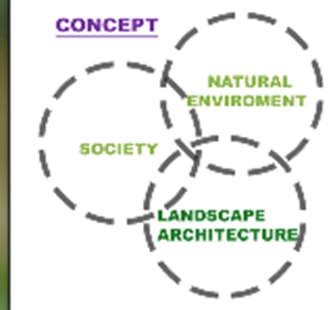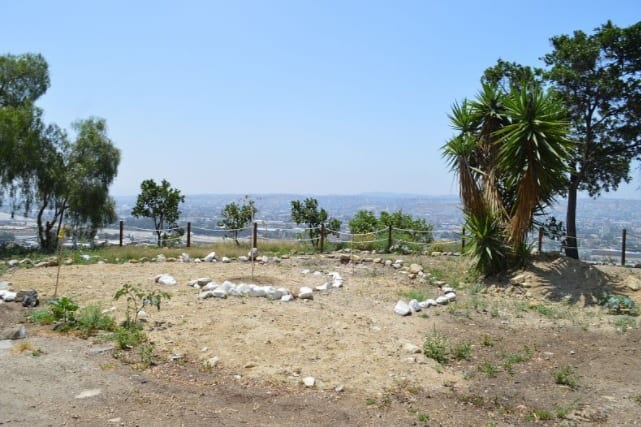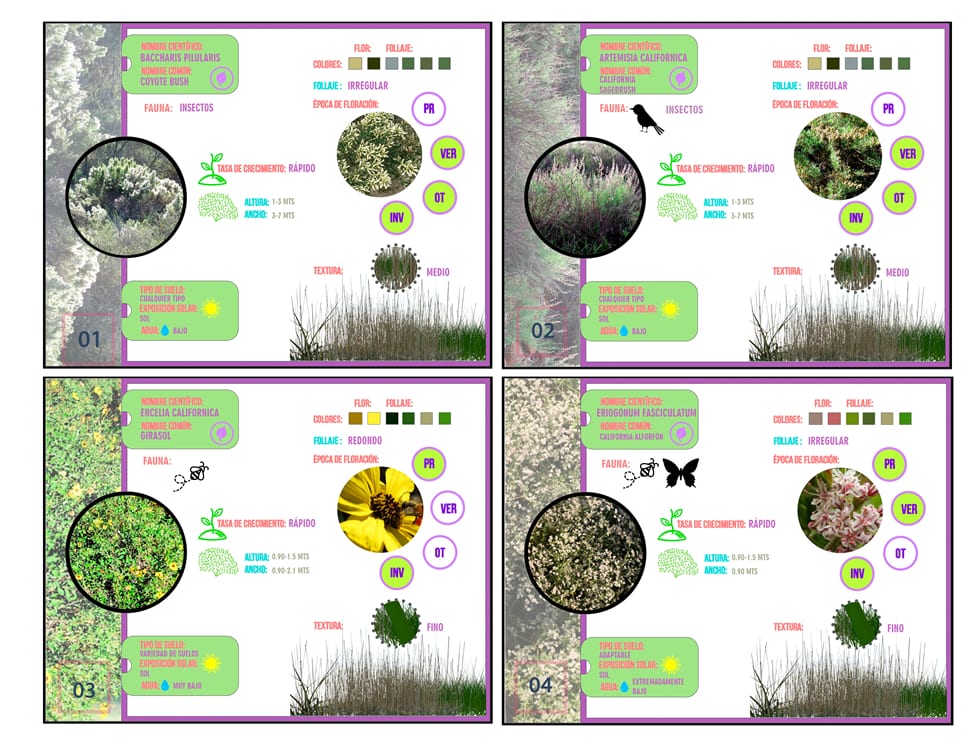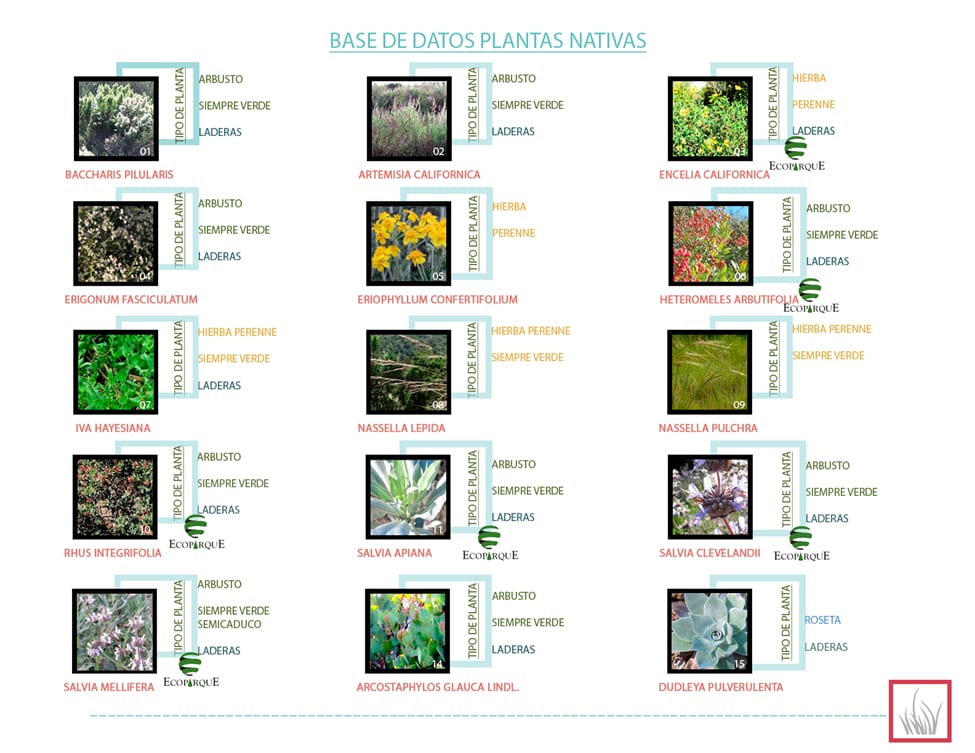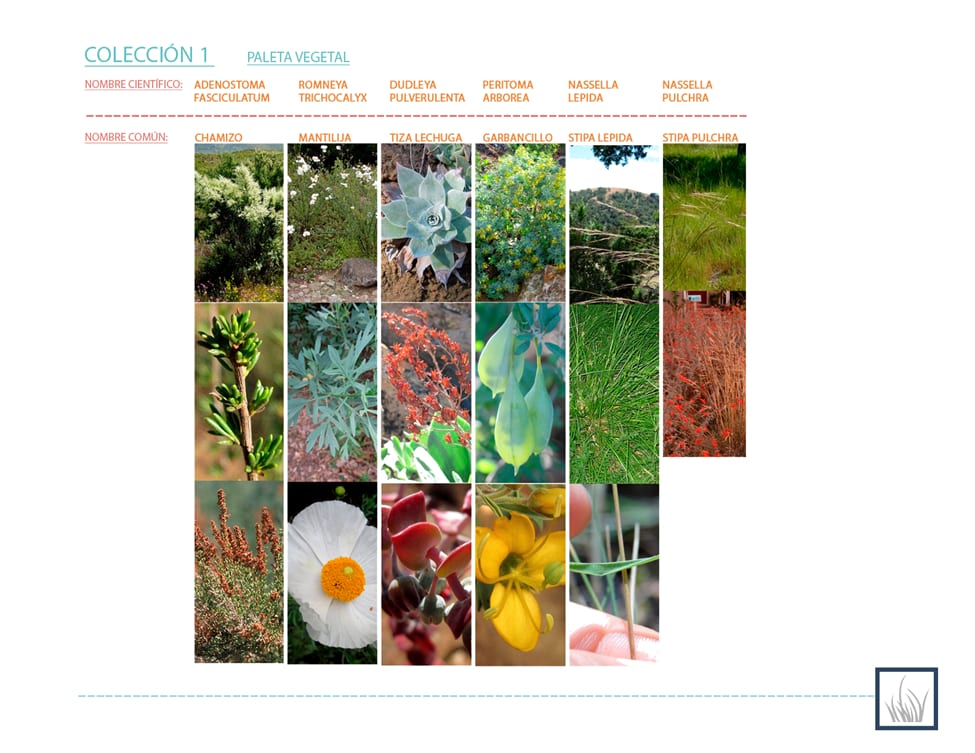The Case of Ecoparque, Tijuana, Baja California, Mexico
by Melissa Lilian Díaz Salazar and Lina Ojeda Revah
Concept
The concept means that our urban landscape has a major role to play in conservation. We have to create spaces for wildlife and support nature and biodiversity.
Introduction
Green spaces in the city of Tijuana are usually covered with exotic vegetation, which needs large quantities of water and maintenance efforts in order to survive. In the California Biotic Region where Tijuana expands, there are a many plant species with ornamental characteristics that can be used for forestation purposes, with less maintenance and water requirement. Nevertheless, they are not used because their landscape potential is not yet developed. Therefore, in this research we attempt to design an attractive urban landscape architecture design based on native vegetation.
Method
The landscape architecture proposal design will be carried out in Ecoparque, an urban green space that encourages the development of different sustainable techniques to mitigate environmental problems.
We selected the coastal sage scrub and chaparral communities for our work and created a native garden, because in the city of Tijuana, these communities are lost to commercial developments and construction.
We used the California native plant data base as our guide to select some plants for the garden. Specifically, we selected species from the coastal sage scrub and chaparral communities, and narrowed the selection considering the following characteristics:
- Visual appeal
- Leaves and flower colors
- Flowering season
- Pleasant textures
- Particular sculptural elements
- Heights and shapes
- Root systems
- Capacity to attract native animals
- Life forms (layers)
- Annual Wildflower
- Groundcovers
- Grasses
- Blooming shrubs
- Trees
With this information a record card was developed for each plant selected.
The planting designs were obtained by grouping the plants that shared the same requirements and then combining species with different characteristics and layers. A planting palette was then defined for each design and complemented with architectural elements.
We decide what plants will grow in our native garden, but it’s important to know how they work together as well as alone. We are working with life, and each plant has a role. Some plants produce food for birds or nectar for bees. By planting a variety, we support life in our gardens.
The result of this collection is a study of the plant structure, foliage, color and texture. It’s important to increase species and diversity of plants.
Results

In the landscape proposal, we about humans, plants and animals, the role of each and their connections.
We created a small-scale walkable display and experiential design, which attempts to reconnect people with the natural world and to promote the benefits it provides. These same principles can be replicated in house gardens, in order to maintain the unique biodiversity of the region.
About the Authors
Melissa Lilian Diaz Salazar graduated from Universidad de Tijuana in Architecture and currently carries out projects focused on the sustainability and maintenance of local biodiversity.
Lina Ojeda Revah is a research professor of El Colegio de la frontera Norte since 1988. Her Work focuses on the ecology of the landscape, urban green areas, and green infrastructure.
***
Each author appearing herein retains original copyright. Right to reproduce or disseminate all material herein, including to Columbia University Library’s CAUSEWAY Project, is otherwise reserved by ELA. Please contact ELA for permission to reprint.
Mention of products is not intended to constitute endorsement. Opinions expressed in this newsletter article do not necessarily represent those of ELA’s directors, staff, or members.

